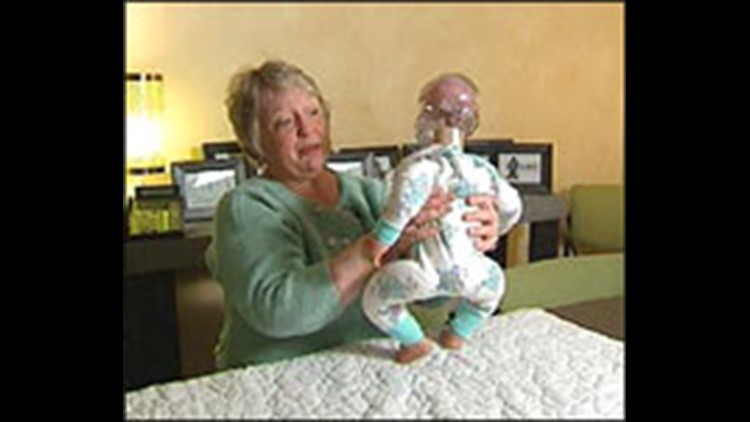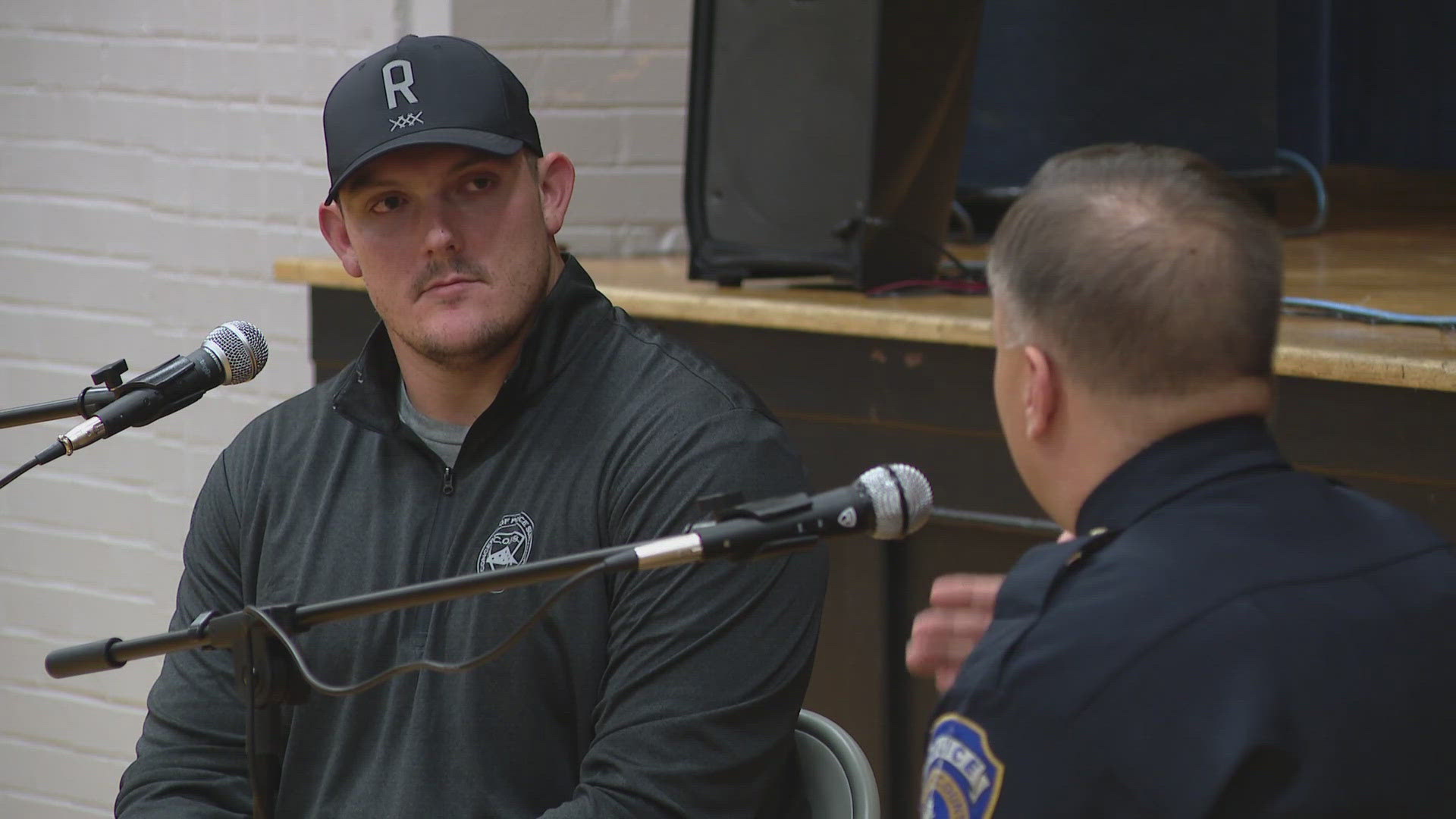Anne Marie Tiernon/Eyewitness News
Fishers - The future is forever changed for little Clark Night, the four-month-old from Fishers shaken recently by his sitter Melanie Ford. Police say Ford shook Clark on five separate occasions and threw the child on the floor on one occasion.
"Thinking about it makes me ill," said Clark's father.
Methodist Registered Nurse Nena Ray set out to prevent more tragedies by developing a doll that cries and has a transparent view of the brain, showing what happens when you violently shake a baby. The idea is to teach caregivers what can potentially happen when they they fail to keep their frustration with a crying infant under control.
"The brain is attached to the neck and it's going back and forth and it gets sheared off by the skull and all that bleeding occurs and of course wherever there is blood, the brain is not getting oxygen, so that part of the brain dies," she said.
When the force is too great, lights in the doll's head light up, showing when vision at the back of the brain is impaired. If the damage is severe, there will be emotional impairments and problems with memory. Lastly, in the center, speech and motor skills could be at risk in severe cases.
Ray says one-third to one-fourth of the babies who are shaken die.
A diagnostic camera looks through the eye and tells the tale. "We can see the whole back of the brain and if we see little dots of blood all over it then that is shaken baby syndrome because you do not get all over bleeding from one fall to the floor," said Ray.
Ray has been named a local healthcare hero by the IBJ for her patented product. She will sell the doll nationally for $599, mostly for teaching.
"I would like to think they will sell 3,000 a year," she said.
Part of the education process is understand who is most likely to shake a baby. Research shows that 65 to 95 percent of the time it's a man, typically in their twenties and either the father of the baby or the mother's boyfriend. When a woman is responsible, it's typically not the mother but rather a babysitter or caregiver.



